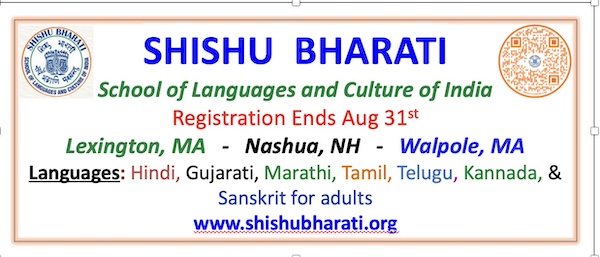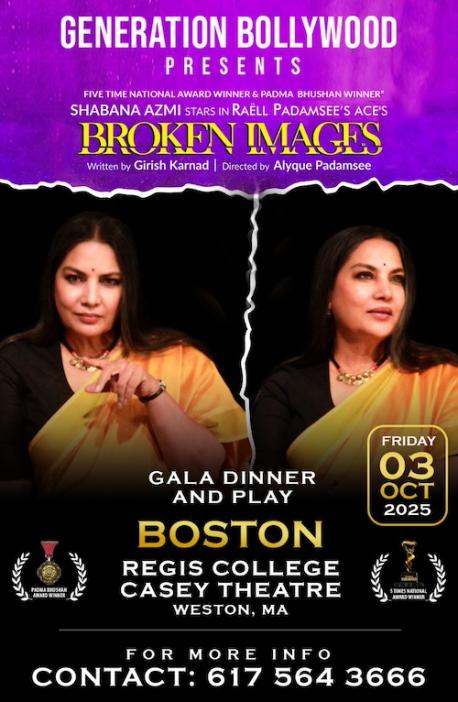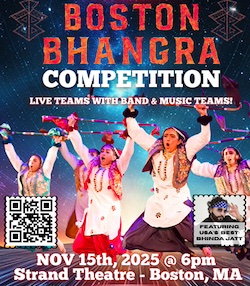| 2025 | |||||||||||||||||||||||||||||||||||||||||||||
| <<AUG | SEP | OCT>> | |||||||||||||||||||||||||||||||||||||||||||
| |||||||||||||||||||||||||||||||||||||||||||||
Bharathanatyam Dance Classes Offered
Bharathanatyam - a traditional South Indian Classical dance form which involves heavy footwork (Laya), beautiful expressions (Bhava), Rasa (involvement) and Thala (rhythm). Dance has several forms and styles, each based on unique principles codified by eminent personalities. One of the forms is Tanjore quartet, evolved by dancer K.N.Dhandayuthapani Pillai. It can be choreographed and performed to the lyrics in any Indian language. The themes for this dance are mainly stories from Indian epics and mythology. Costumes of radiant silk in dazzling colors and sparkling ornaments bedeck the dancer in such a way that when the dancer stays still, she/he can be mistaken for a sculpture. Training in Bharata Natyam begins with the learning of the basic dance steps called "Adavus". "Once the adavus are mastered, usually over a period of one year, these are combined into jatis, theermanas or aridis. A series of jatis are recited and these syllables are called "sollukattus" very similar to the language of the drum. The pupil studies each step through the direction of the dance teachers who beat out the rhythm on the wooden block with a rhythm stick. The training period normally lasts a minimum about seven years after which the dancer gives her first performance that is called the "Arangaetram. Bharathanatyam - a traditional South Indian Classical dance form which involves heavy footwork (Laya), beautiful expressions (Bhava), Rasa (involvement) and Thala (rhythm). Dance has several forms and styles, each based on unique principles codified by eminent personalities. One of the forms is Tanjore quartet, evolved by dancer K.N.Dhandayuthapani Pillai. It can be choreographed and performed to the lyrics in any Indian language. The themes for this dance are mainly stories from Indian epics and mythology. Costumes of radiant silk in dazzling colors and sparkling ornaments bedeck the dancer in such a way that when the dancer stays still, she/he can be mistaken for a sculpture. Training in Bharata Natyam begins with the learning of the basic dance steps called "Adavus". "Once the adavus are mastered, usually over a period of one year, these are combined into jatis, theermanas or aridis. A series of jatis are recited and these syllables are called "sollukattus" very similar to the language of the drum. The pupil studies each step through the direction of the dance teachers who beat out the rhythm on the wooden block with a rhythm stick. The training period normally lasts a minimum about seven years after which the dancer gives her first performance that is called the "Arangaetram. Bharathanatyam - a traditional South Indian Classical dance form which involves heavy footwork (Laya), beautiful expressions (Bhava), Rasa (involvement) and Thala (rhythm). Dance has several forms and styles, each based on unique principles codified by eminent personalities. One of the forms is Tanjore quartet, evolved by dancer K.N.Dhandayuthapani Pillai. It can be choreographed and performed to the lyrics in any Indian language. The themes for this dance are mainly stories from Indian epics and mythology. Costumes of radiant silk in dazzling colors and sparkling ornaments bedeck the dancer in such a way that when the dancer stays still, she/he can be mistaken for a sculpture. Training in Bharata Natyam begins with the learning of the basic dance steps called "Adavus". "Once the adavus are mastered, usually over a period of one year, these are combined into jatis, theermanas or aridis. A series of jatis are recited and these syllables are called "sollukattus" very similar to the language of the drum. The pupil studies each step through the direction of the dance teachers who beat out the rhythm on the wooden block with a rhythm stick. The training period normally lasts a minimum about seven years after which the dancer gives her first performance that is called the "Arangaetram
Date: 06/07/2012
Location: For Venue and other details please contact by email
Time: 3pm
Cost: 15 $ per hour
Contact: radhagopalam12@gmail.com
Email: radhagopalam12@gmail.com

|

|

|

|
